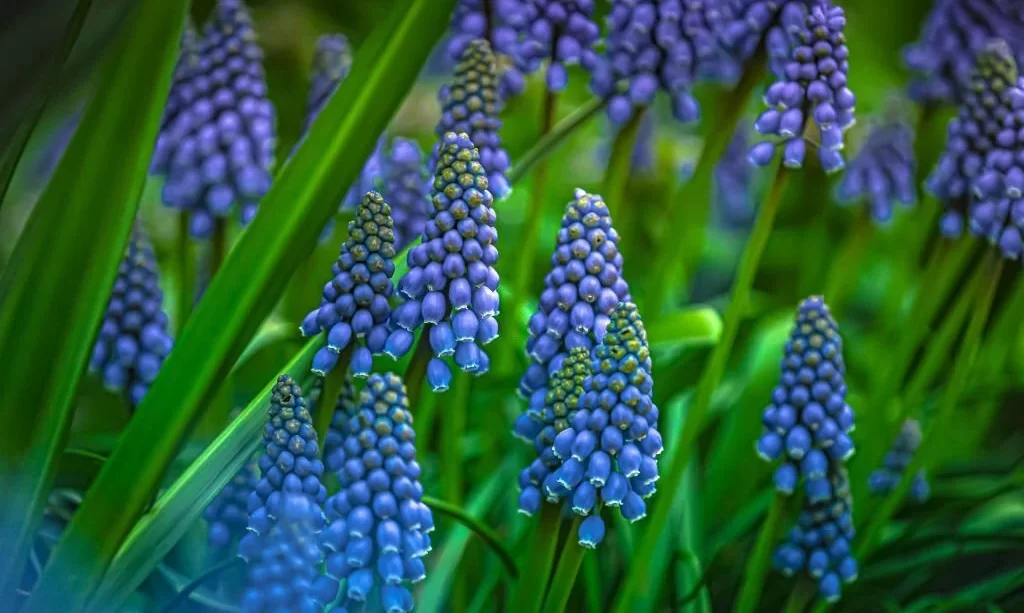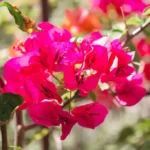Grape hyacinths, with their vibrant clusters of tiny, bell-shaped flowers resembling miniature grapes, are a delightful sight in spring gardens. These charming blossoms, scientifically known as Muscari spp., grace flowerbeds with their vivid colors, ranging from deep purples to pale blues. However, beyond their ornamental allure, questions often arise about the culinary potential of grape hyacinths. In this exploration, we aim to shed light on whether grape hyacinths are edible and, if so, what considerations should be kept in mind. While they may add a touch of whimsy to our landscapes, their place in the world of cuisine requires a closer look.
Grape Hyacinth Overview
Before delving into the question of edibility, let’s begin with a comprehensive overview of grape hyacinths:
- Botanical Beauty: Grape hyacinths are small, perennial bulbs belonging to the genus Muscari, a member of the Asparagaceae family. Their distinctive, grape-like flower clusters emerge in early spring, often providing a splash of color just as winter recedes.
- Garden Favorites: These charming plants are beloved for their ability to naturalize, forming picturesque carpets of blooms in garden borders, rockeries, and even containers. Their relatively low maintenance requirements make them a favorite among gardeners.
- Variety of Species: The Muscari genus encompasses numerous species and cultivars, each showcasing unique color variations, from the iconic deep blue of Muscari armeniacum to the delicate pink of Muscari aucheri ‘Pink Sunrise.’
Understanding the basics of grape hyacinths sets the stage for a closer examination of their edibility and the factors that should be considered before incorporating them into the culinary world.
The Edibility of Grape Hyacinths
When contemplating the edibility of grape hyacinths, it’s crucial to approach the subject with caution and awareness:
- Common Misconception: The name “grape hyacinth” might suggest a connection to culinary grapes, but this association can be misleading. While grapes are well-known for their delicious fruit, grape hyacinths are primarily grown for their decorative qualities rather than their culinary attributes.
- Complexity of Edibility: Determining whether a plant is edible isn’t always straightforward. In the case of grape hyacinths, their edibility is a subject of debate and ambiguity. While there is limited historical evidence of their use in traditional medicine and folk remedies, they are not considered a significant food source.
- Lack of Culinary Tradition: Unlike some other edible flowers and plants with a well-established culinary history, grape hyacinths do not have a strong tradition of consumption in various cuisines.
- A wonderful mixture of blue and light blue Muscari! Muscari are a Dutch favorite because they are deer resistant, naturalize well, and easy to grow. 6″-8″ Tall Zone 3-9 Exercise caution and use your best judgment before ordering during unusually hot or cold weather (below 32 degrees F, or in excess of 95F for shipping purposes), as these extremes may leave your plant vulnerable to damage.
Toxic Components in Grape Hyacinths
One of the primary reasons for caution when considering grape hyacinths as food is the presence of potentially toxic compounds:
- Alkaloids: Grape hyacinths contain alkaloids, a group of naturally occurring compounds that can have diverse effects on the body. Alkaloids, while not necessarily harmful in all cases, are often associated with plants that have medicinal properties or those used for ceremonial purposes.
- Potential Health Risks: Consumption of alkaloids can pose health risks, including digestive discomfort, nausea, and other adverse effects. These compounds can vary in concentration among different plant parts and species.
- Allergenic Potential: Like many plants, grape hyacinths have the potential to cause allergic reactions in some individuals, especially those with sensitivities to specific plant compounds.
While it’s essential to acknowledge that there are historical references to grape hyacinths being used in various ways, including medicinally, it’s equally important to exercise caution when considering them as a food source. Their culinary use, if any, should be approached with careful consideration of potential risks and allergenic factors.
Historical and Culinary Uses
Exploring the historical and culinary aspects of grape hyacinths reveals intriguing insights:
- Traditional Medicine: Throughout history, grape hyacinths have occasionally found their way into traditional medicine and herbal remedies. Some cultures believed that these plants possessed medicinal properties, although specific applications varied.
- Limited Culinary Record: Unlike certain edible flowers and plants with a well-documented culinary history, grape hyacinths lack an extensive tradition of use in the kitchen. There are occasional references to their use in salads or as garnishes, but these instances are relatively rare.
- Cultural Significance: In some cultures, grape hyacinths held symbolic or ceremonial value rather than culinary importance. Their vivid appearance made them suitable for various decorative purposes.
Precautions and Considerations
When considering the culinary potential of grape hyacinths, it’s crucial to prioritize safety and responsible plant use:
- Proper Identification: If you decide to experiment with grape hyacinths in the kitchen, ensure accurate identification of the plant and its specific species or cultivar. Mistaking similar-looking plants can lead to unintended consequences.
- Allergies and Sensitivities: Be mindful of potential allergic reactions. As with any new food item, start with small quantities to gauge your body’s response.
- Limited Culinary Use: Due to their limited culinary history and the presence of potentially toxic compounds, grape hyacinths should be approached with caution in the kitchen. They are not a mainstream food source and should not replace well-established edible plants in your diet.
- Responsible Foraging: If foraging for grape hyacinths in the wild, do so in areas where they are abundant and uncontaminated by pesticides or pollutants. Always adhere to local regulations regarding plant collection.
Conclusion: Appreciating Grape Hyacinths Safely
In conclusion, the culinary use of grape hyacinths is a subject marked by uncertainty and caution. While these charming spring blooms have occasionally found their way into traditional medicine and folklore, they do not have a well-documented history of being a staple food source.
For those curious about incorporating grape hyacinths into their culinary repertoire, it is essential to exercise prudence. Proper identification, awareness of potential allergens, and a responsible approach to experimentation are all paramount. Grape hyacinths can undoubtedly add a touch of novelty to your culinary endeavors, but their place in the kitchen should be a mindful and well-informed choice, always prioritizing safety and responsible plant appreciation.




